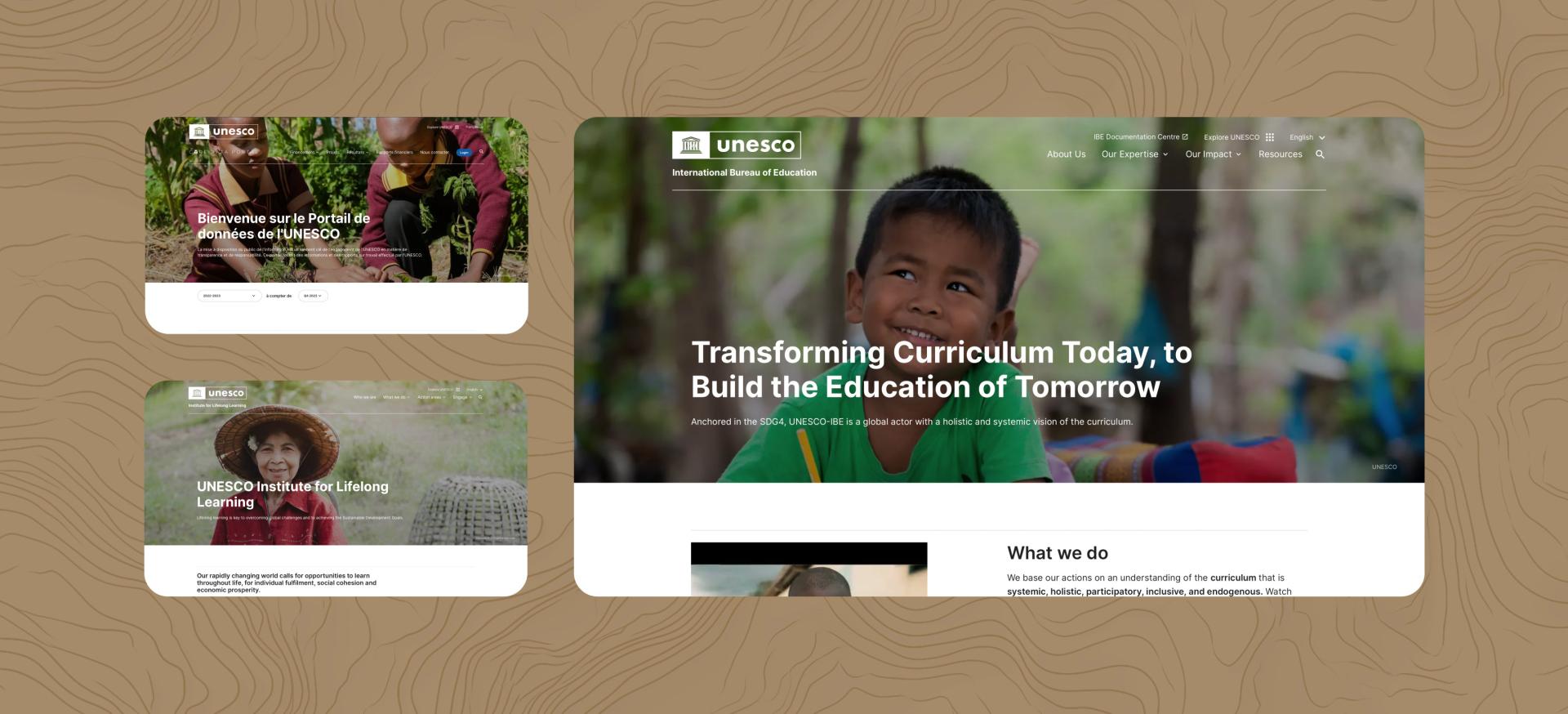Streamlining a digital ecosystem of over 200 sites

Optimising the digital ecosystem for a consistent user experience
Unesco's digital ecosystem is vast. With over 200 sites, Unesco addresses a wide variety of targets, with different objectives and uses, and linked to a variety of business units. An ecosystem that was reflected in multiple CMSs, frameworks and technologies, but also in practices, with no rationalisation or standardisation of the user experience.
The aim was to completely rethink the user experience in order to promote UNESCO through its services, values and image, and to standardise all the sites from a technical, ergonomic and editorial point of view.


Key processes and business support
To transform Unesco's digital ecosystem, several key stages were followed. Firstly, a full audit was carried out to assess the existing system, followed by a collection of user requirements. Next, a digital strategy was defined, including technical, UX design, content and governance projections. A set of specifications was drawn up for the overhaul of the site factory, with implementation monitored to ensure that deadlines were met. Finally, ongoing support was provided to the business units throughout the process.
Modernising the digital infrastructure
To modernise its digital infrastructure, the team set about creating a Drupal-based site factory, based on a unified design system. This approach ensures visual and functional consistency across all the organisation's platforms.
In addition, Strapi has been implemented as a single point of entry for content and data management. This centralised solution simplifies the management and updating of information, while offering greater flexibility to meet the company's evolving needs.

We needed a partner who could help us identify our needs and bring together the different tech professions. Smile helped us to make the right choices, and to stay on course while remaining focused on the end goal.
Maxime B.
Digital Project coordinator






